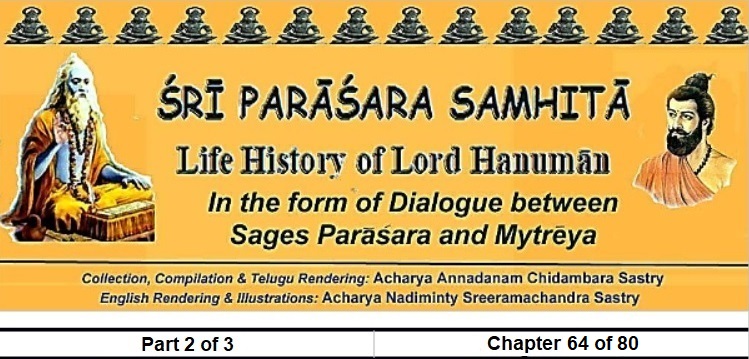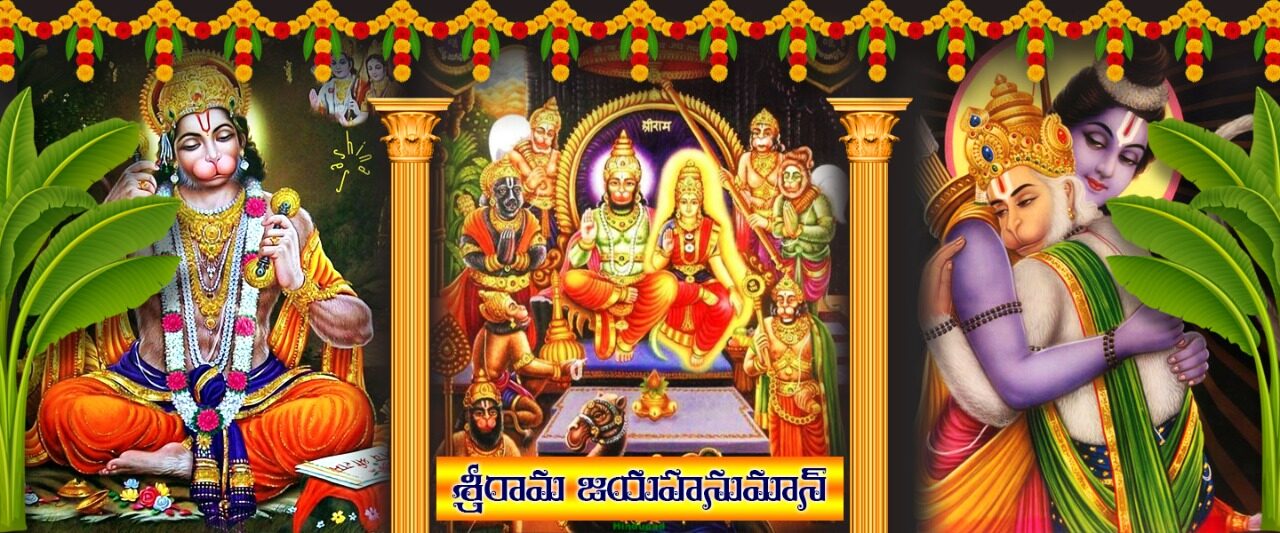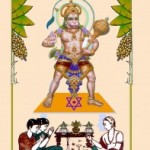
64th Chapter (Chatuşaşţitama Paţalah)
“The Story of Coronation”
(Rājābhişēkakathanam)
श्रीपराशरः
अथान्यदपि वक्ष्यामि राज्ञां रक्षाकरं परम्
अत्र मङ्गलवारे तु भस्मयोगं तु कारयेत्।। 1
Śrī Paraāśara:
“Oh! Sage Mytrēya! I am telling one other fact. It is very good for welfare of the kings. For this, the bhasmayōga (covering self with ‘holy ash’ (also known as ‘vibhooti’, i.e., the sacred ash from the fire of a yogi or saint or from the sacrificial fire known as yajna, in which special wood splits, herbs, grains, ghee and other items are offered as part of a worship ritual), has to be performed on a Tuesday. (1)
अपतितं गोमयं ग्राह्यं शुचिर्भूत्वा यथाविधि
अश्वत्थोदुम्बरप्लक्षन्यग्रोधानां चतुष्टयीम्।। 2
Preparation of Holy Ash
One has to make oneself clean and pure first and then collect, as prescribed, cow dung that has not fallen to the ground. The four types of fig, namely, Bodhi fig (Ficus religiosa), Indian fig (Ficus racemosa ), white fruited wavy leaf fig (Ficusinfectoria) and banyan (Ficusbenghalensis), (2)
त्वचां संगृष्ह्य मतिमानुशी कृष्णदनम्
कर्पूरं कुंकुमं देवि बिल्वमूलं ततः परम्।। 3
Have to be collected without their bark coming off; and the intelligent performer has to collects vetiver (Chrysopogon zizanioidesr), dark sandal, camphor, kumkuma (made of turmeric powder), stone or wood apple (Aegle marmelos), (3)
वाराहीं च कुरुवेरुश्वेतार्कस्य च मूलकम्
एतानि चूर्णयित्वा तु गोमयेन हि पेषयेत्।। 4
The roots of Ground Palmyra (Curulingoorchiodes), kuruveror vetiver (Coelusvettiveroides) and Apple of Sodom (Calotropisprocera = svetaarka) have to be powdered and grounded with cow dung. (4)
तत्पिष्टं दीपसंस्कारसंस्कष्तेन च वह्निना
दग्ध्वा विभूतिं संगृह्ना भाजने गन्धवासिते।। 5
The dough mass (so obtained) has to be converted into holy ash (bhasma) by burning over a (ghee) lamp and the ash stored in a scented container. (5)
अभिमन्याष्टसाहस्त्रं मन्त्रध्यानपरायणः
आपदुद्धारमन्त्रेण दध्याद्रक्षां दिने दिने।। 6
The person that is going for meditative recital of the mantra has to protect (it) with daily 1000-time recitation of the āpaduddhārakamantra (hymn protecting from dangers). (6)
तद्भस्मं धारयेदेवं शंतिलक्ष्ये घ्र्तिस्तथा
बलं प्रज्ञावशत्वेन आयुरारोग्यमेव च।। 7
In this way, that holy ash has to be worn for achieving peace. By wearing so one gets brightness, strength, intellectual ability, balanced nature, long life and health. (7)
अशक्तावपि शक्तिस्स्यात् तस्माद्यत्नेन धारयेत्।। 8
Weaklings get strength; hence, one has to wear it on purpose. (8)
शय्यागष्हे तथा कुर्यादुपविष्टस्तु बुद्धिमान्
भूतवृश्चिकसर्पाद्याः पलायन्ते च दूरतः।। 9
A balanced person has to do so even while going into the bedroom. Doing so will drive away spirits, wandering creatures, scorpions, snakes and others, (9)
मन्त्रं संगृह्ना सिद्धस्सन् स्नेहाद्यत्नेन रक्षयेत्
ब्राह्मणो मन्त्रसंसिद्धेः नित्यं कुर्यात्तु सात्विकम्।। 10
One obtaining the mantra, attaining their powers, has to protect it dearly and willfully. (10)
अतः परं प्रवक्ष्यामि अभिषेकं सुदुर्लभम्
राज्ञां हितकरं पुण्यं शांतिपुष्टिविवर्धनम्।। 11
Performing Abhişēka (Ritual Bathing of the Idol)
Then I am telling about the unobtainable method of performing ritual water pouring (abhişēka). It benefits the kings and promoter of peace and well-being. (11)
महापापप्रशमनं महारोगभयापहम्
ब्रह्महत्यादिशमनं अभिचारनिवारणम्।। 12
It can get rid of the worst of sins, serious ailments and such sins like the one that accrue due to killing of Brāhmins. It stops the measures others take to harm you. (12)
शत्रुक्षयकरं देवि मासे मासे समाचरेत्
आपदुद्धारमन्त्रज्ञं ब्राह्मणं शांतिमानसम्।। 13
It destroys the enemies. This has to be performed every month. A Brāhmin of balanced mind that knows the āpaduddhārakamantra, (13)
प्रार्थयेदभिषेकं च दध्ना घृतमिवोद्गतम्।। 14
Has to be requested to perform the abhişēka that as defined by all the scriptures of knowledge, like butter coming out of curd (very easily), and that that cannot be obtained even by gods. (14)
प्रार्थितो मन्त्रसंसिद्धो नित्यं जपपरायणः
कुर्यान्महाभिषेकं च शुभनक्षत्रके तथा
अभिषेकप्रयोगज्ञः मन्त्रसंयुतमानसः।। 15
So prayed, a Brāhmin that is an achiever of the mantra, has to perform the great abhişēka on a constellation-wise (star of the day) auspicious time. (15)
चतुस्तोरणपर्यन्तं कल्पयेन्मण्डलं तथा
वितानं दर्भमालाभिरलंकृष्तपरिच्छदम् ।। 16
Preparation of the Mandapa Area
The area has to be decorated with hangings (tōraņa) on the four sides forming a rectangular (mandapa) area. It has to be covered with dharbha (panic grass; kuśa) grass garlands covering it fully. (16)
तस्य मध्ये महादेवि! रोमलोष्टविव£जतम्
कृत्वा तत्र विकीर्या थ अष्टद्रोणैश्च शलिभिः।। 17
The area in between has to be cleaned of pebbles, soil clots, hair etc. and sprinkled with unhusked paddy grains. (17)
तत्र कृत्वा महापद्मं अष्टपत्रं सक£णकम्
शक्तित्रयसमायुक्तं अष्टभैरवसंयुतम्।। 18
There (the figure of) an eight-petal lotus with central stigma (containing pistil) has to be arranged (drawn). The Three-Powers (śakti–trayam) and the Eight Bhairavas (frightful Śaivaite forms – 1. Vidyārāja, 2. Kāmarāja, 3. Nāgarāja, 4. Scacchandarāja, 5. Lambitarāja, 6. Dēvarāja, 7. Ugrarāja, 8. Vişņurāja), (18)
तत्तद्बीजेन देवेशि तस्य पीठं प्रपूजयेत्
तद्बाह्ये कोणपालांश्च तत्तद्बीजेन पूजयेत्।। 19
This seat has to be worshipped with respective base or root letters. Outside the seat the Angle-Rulers (kōņpālakas) have also to be worshipped similarly with seed-letters. (19)
तद्बाह्ये मातृष्कावर्णं तत्तन्नाम्ना च पूजयेत्
तद्बाह्ये रुद्रयुक्तां तु मातृकां विन्यसेद्बुधः।। 20
Mother Goddess Worship
Outside this, the Mother Goddess has to be worshipped with the stipulated 1000 names (Lalitāsahaśranāma). Outside this, the Mother Goddess worship act (with yogic controlled breathing intermissions) has to be carried out withŚreeRudram (Vedic hymns in homage to Śiva). (20)
एवं क्रमेण देवेशि पव्म्चावरणमुच्यते
चक्रस्य सर्वतो बाह्ये दक्षिणेन विनायकम्।। 21
This is the order of pańcāvarņa (method of the Five-Coloured Goddess) worship that is being described in this manner. Southwards to the extreme outside the (sketch of) cakra amulet the deity of Vināyka (the hurdle remover), (21)
उत्तरे तु यथा दुर्गां पूजयेद्देशिकोत्तमः
एवं पूजाविधानेन तत्तत्स्थानेषु देवताः।। 22
And the goddess Durga towards north side, have to be worshipped. In this manner the various godly persona have to be worshipped in their respective places – directions. (22)
ततस्तु विन्यसेत्साध्यान् सापिधानान् सकूर्चकान्
पुष्पाक्षतसमायुक्तान् तिलचन्दनसंयुतान्।। 23
Similarly to be adored are the sādhyadēvataVidyārājas (godly personalities that were active in purāņa= ancient history scriptures) wearing new clothes, with bundles of darbhagrass, flowers, sacred rice (akşatā), sesame seeds, sandal paste, (23)
अशीतिसंख्याकलशान् तोयपूर्णान् यथाविधि
तत्तद्देवसमायुक्तान् अर्चयेन्मंत्रवित्तमः।। 24
Kalaşa (Holy Pot) Worship
The mantra performer has to worship, as stipulated, pure 80 water-filled pots or vessels (kalaśas) representing different gods. (24)
चक्रमध्ये महाकुंभं सौवर्णं राजतं तथा
मृन्मयं वा यथा पिष्टं कुंभं कुंभमलकृतम्।। 25
Putting great gold and silver pots in the centre of the cakra, the same have to be decorated with clay or flour; tying one pot to the other (25)
सूत्रेण वेष्टनं कुर्यात् शुद्धतोयेन पूरयेत्
नवरत्नानि तत्रैव पुष्पानि च शुभानि च।। 26
With cotton thread and filled with clean water. Into it, nine varieties of diamonds, auspicious flowers, (26)
अक्षतांश्चैव निक्षिप्य क्षीरवृक्षचतुष्टयम्
लक्ष्मीं दूर्वां महादेवीं बिल्वकर्पूरचन्दनम्।। 27
And sacred rice, having been added and add the four types of fig, namely, Bodhi fig (Ficusreligiosa), Indian fig (Ficusracemosa ), white fruited wavy leaf fig (Ficusinfectoria) and banyan (Ficusbenghalensis); also turmeric, dueva grass, sahādēvi (Vernoniacineria) herb, Bengal quince or bilvaor bel (Aegle marmelos), camphor, sandal, (27)
उशीरं कुंकुमं चैव कक्कोलागुरुसंयुतम्
चम्पकं मल्लिकां जातिं गोमेधं ताम्रकं तथा।। 28
Vettiver, kumkum (dark pink dyed turmeric powder), fragrant herb takkolam (Pipercubeba), aloes or agar or eagle wood spice, mixed with fragrant campaka (Micheliachampaka), jasmine, Spanish or creeper jasmine, agate, chrysanthemumflowers, as well as, (28)
कुम्भमध्ये विनिक्षिप्य सापिधानं सकूर्चकम्
दुकूलयुग्मसच्छन्नं देवस्य हृदयङ्गमम्।। 29
The tied bundle of darbhagrass (darbhamuşţi) kept between the kalaśas and covered with a pair of clean sacred (silk) cloths, that is dear to the Lord, (29)
कृत्वा मंत्रविधानेन व्याघ्रचर्मासनस्थितः
कुंभमध्ये महादेवं आपदुद्धारणाह्नयम्।। 30
ĀpaduddhārakaSwamy – Hanumān
Performing as per procedure, the mantra performer, seated on a tiger skin, the great Lord known as āpaduddhāraka (protector from dangers) inside the pot, (30)
ज्वलद्दंष्ट्रं सुभीमं च अग्नित्रयनिभेक्षणम्
ऊध्र्वकेशं महाघोरं चन्द्ररेखाविराजितम्।। 31
Possessing shining canine teeth, the one creating fear, having eyes similar to the three great Fires, with hair spread over the sky, the frightful one, radiant with a moon-linemark, (31)
महानागकृष्तेनैव दन्तवक्त्रेण शोभितम्
चतुर्बाहुमुदाराङ्गं नागयज्ञोपवीतिनम्।। 32
Wearing the skin of a great elephant, shining with a denticle, one having four shoulders, one having majestic body parts, one wearing a snake as a sacred thread, (32)
हारकेयूरसंच्छन्नं शतनागविभूषितम्
नूपुरध्वनिसंयुक्तं सर्वकर्मनिकृष्न्तनम्।। 33
Adorned with ornamental chains and armlets, wearing 100-serpantnāgabhooşaņa (sacred snake ornament), the one always surrounded by the sweet sound of anklets, one who breaks from all bindings of action (sarvakarmavikŗitana), (33)
तस्माद्व्याघ्रसमायुक्तं ध्यायेच्च हनुमत्प्रभुम्
रात्रौ राज्ञां विशेषश्च व्याघ्रचर्माणि संश्रयेत्।। 34
Has to meditate upon Lord Hanumān wearing a tiger skin. A king has to invariably wear tiger skin during nights. (34)
एवंरूपं समापोह्य ध्यानयुक्तं जपेद्विजः
अयुतं लक्षणोपेतं मातृष्कान्याससंयुतम्।। 35
A Brahmin thinking of this form has to recite the mantra 10,000 times with meditation and performing mātŗikānyāsa (touching different body parts while simultaneously reciting). (35)
घटस्येशानदिग्भागे चतुरत्रं तु कारयेत्
नाभियोनिसमायुक्तकुण्डे मन्त्रसमाहितः।। 36
A rectangle has to be drawn towards the north-eastern part of the pot. Along with the mantra (recitation), into the fire-sacrificial receptacle / small tank, having a central spot (nābhi) and stigma part (yōni) (36)
पयसा सर्पिषा चैव तिलेनाग्नौ स्पृशन् घटम्
प्रत्येकं जुहुयान्मन्त्रं अष्टोत्तरसहस्रकम्।। 37
To be offered into the sacrificial fire, reciting the mantra 1008 times, are milk and ghee, touching the pot every time (they are offered). (37)
प्रत्येकं च वलिं दद्याद्राजसं राजसं त्विदम्
ततो मुहूर्तं ध्यात्वा च सर्वकर्मसदाश्रयम्।। 38
A sacrifice has to be performed, especially. Then, meditating for a while upon the Lord, the base of all actions (38)
वाग्यतो मन्त्रसम्पन्नः सांगुलीयपवित्रकम्
अभिषिंचेन्महात्मानं राजानं सर्वसिद्धये।। 39
The one rich in mantra performance and is also a good interlocutor (vāńgmi), wearing a pavitra (sacred ring specially made of kuśa grass), has to perform abhişēka (sprinkling liquid liberally) of the great king for all-round achievement. (39)
अभिषेकेन सम्पन्नः पुरन्दरसमो भवेत्
तेजसादित्यसङ्काश सर्वशत्रुविमर्दनः।। 40
Person so water sprinkled will be equal to Dēvēndra (Chief of Gods). Will be radiant like the Sun and will be able to conquer all enemies. (40)
सप्तद्वीपततिं भूंमिं पव्म्चाशत्कोटियोजनम्।
तेन वीर्येण भुंजीत शतवर्षाणि जीवति।। 41
With such velour, he will be the lord of kingdom spread over Seven Great Islands and extending over 500 million yōjanas (about 6,750 m sq. km) for 100 years. (41)
एवमेव तु कर्तव्यं प्रतिमासं समन्त्रिणाम्
षण्मासेषु तथा कुर्यात्सार्वभौमत्वमिच्छताम्।। 42
This is the compulsory duty of a king, along with his minister, every month. A king wanting to become an emperor has to do so for six months. (42)
मन्त्रिणां पूजयेद्राजा यथाशक्ति समव्म्चितः
गोभूहिरण्यवस्त्राद्यैर्वाहनादिभिरेव च।। 43
The king has to worship mantra scholars and gift cows, gold, clothes, vehicles (chariots) and others. (43)
तत्प्रसादान्महेशत्वं स्यात्तत्कामं प्रपूजयेत्
मन्त्री च नित्ययुक्तात्मा राज्ञां सर्वं समाचरेत्।। 44
He will achieve lordship (mahēsatva) only via the mantra scholars. Hence the king has to well worship the mantra scholars. And the mantra scholars have always to serve the king with all their might. (44)
![]()
इति श्रीपराषशसंहितायां श्रीपराशरमैत्रेयसंवादे राजाभिषेककथनं नाम चतुष्षष्टितमः पटलः
Thus ends the 64thChapter “The Story of Coronation”

Click here to visit the Contents of the Part 2.







Be First to Comment